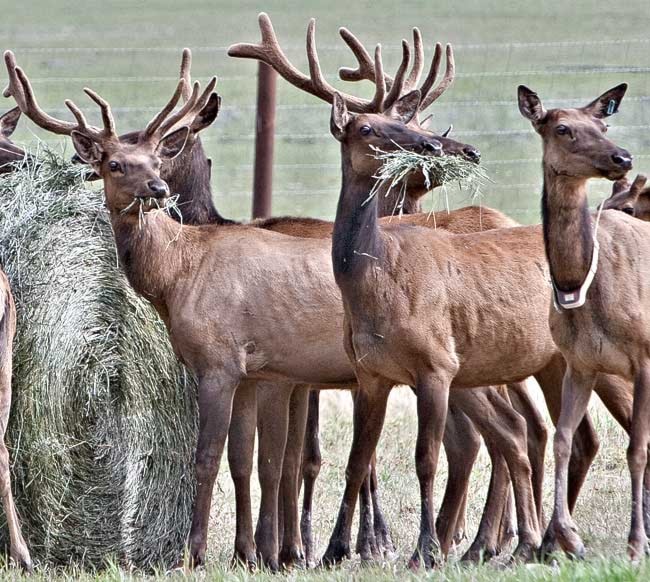Environment biologists have herded 120 wild elk into a pen by using a helicopter.
The animals are being contained to control an infestation of winter ticks.
A year ago, 20 elk were captured for radio collaring.
Every animal showed signs of tick infestation.
Since then, Environment has been looking at ways to deal with the issue, fearing that the ticks may spread to other Yukon animals such as moose.
So far, Environment has ruled out an elk cull and is relying on medicated feed to get rid of the parasite.
However, elk appear reluctant to eat the medicated feed.
Last weekend, biologists capitalized on an opportunity to corral 80 per cent of the Takhini herd into a local game farmer’s pen.
The herd was due to pass LaPrairie Bison Farm just west of Whitehorse.
“We’ve been working with farmers trying to find a place where we could put the elk and hold them until we get our own pen built,” said wildlife veterinarian Michelle Oakley.
“So this was just really good timing and placement of the elk.”
Everything started falling into place, said Oakley.
“We pulled everyone together knowing, OK, we’ve probably got about a three- to five-day window that the elk are going to stay in this area,” she said.
“Let’s go for it.”
Environment quickly built a wing fence leading into the pen and contracted Mike Reed from Heli Dynamics.
“Having a pilot with Mike Reed’s skill is such a huge asset and often makes the difference between success and failure,” said wildlife health co-ordinator Philip Merchant.
On Sunday, 35 animals were moved in.
An additional 85 followed on Tuesday.
Environment workers had to herd the elk for eight and a half kilometres.
“I was in the helicopter on Tuesday and my sense was, that’s about as far as you’d want to push them,” said Merchant.
“This pilot’s got extraordinary skills at moving animals and reading animal behaviour.”
He knew exactly when to push them and when to back off, Merchant added.
It took about three hours to move the elk with the helicopter.
“(Reed) was so patient,” said Oakley.
“You can’t push them, you have to let them go at their own pace.”
“It felt good and felt like it’s something we could probably do whenever we have to move elk again,” said Merchant.
“It certainly showed us that there are some options for manipulating the elk when we need to.”
Biologists will continue to encourage the elk to eat the medicated feed, or perhaps change it from corn to oats.
Regardless of the success of the medication, the ticks will naturally fall off the elk this spring and be contained in the area of the pen.
Biologists are still weighing options for how to deal with the remaining 30 elk in the Takhini area, as well as the 85 elk in the Braeburn herd.
Contact Chris Oke at chriso@yukon-news.com
